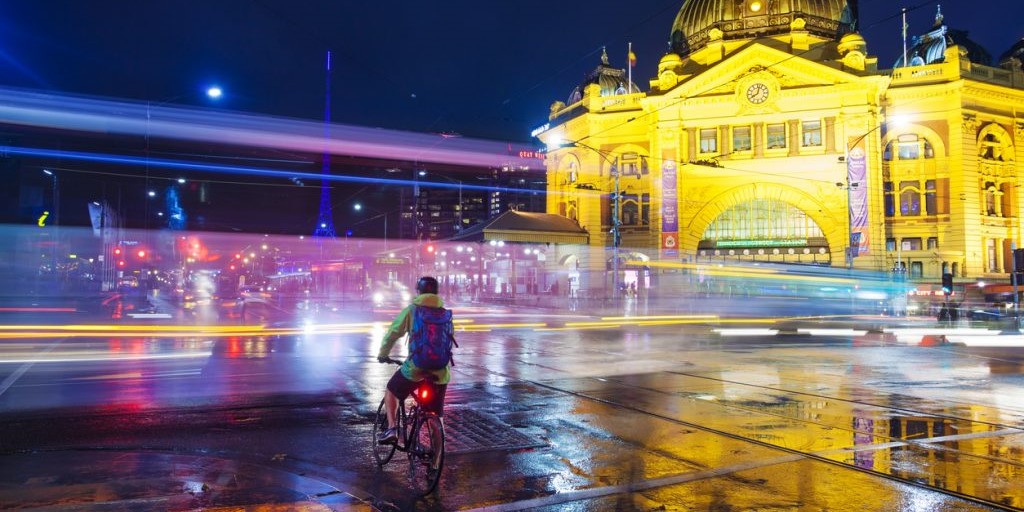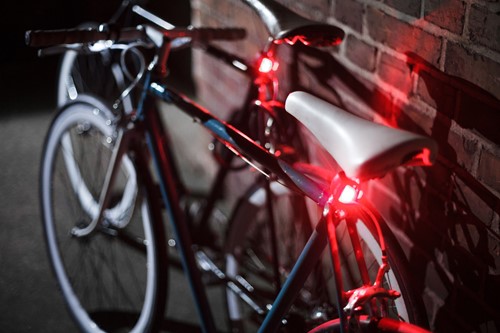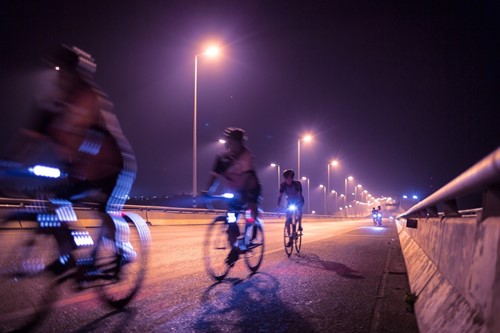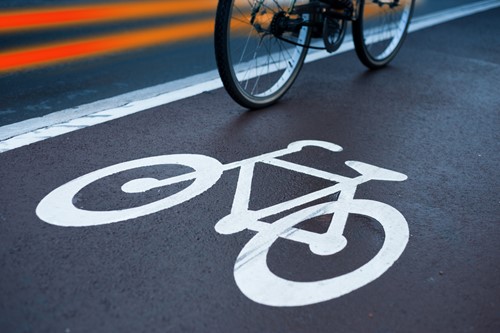

Cycling in the dark safely goes beyond buying a few reflectors and lights – it also takes preparation, keen awareness and knowledge of your route. Here’s everything you need to know about riding your bike at night.

Reduced visibility is the primary danger posed by cycling in the dark, not only yours but pedestrians’ and motorists’ too. For this reason, it’s important to make yourself the most visible you can.
At the risk of stating the obvious, this means equipping your bike, body, and/or helmet with quite a few lights and reflectors. But, what you might not know is that the types of lights you use and where they’re placed can have a drastic impact on their effectiveness.
For instance, blinking lights in pitch-black darkness might not be as useful as you’d think. Imagine you’re a motorist and all you can see is a strobing light that seems to vanish and reappear every two feet. It’s harder to track your movement than if the light was constant.
Flashing lights are ideal for dusk or daytime to alert motorists to your presence, but at night a combination of blinking and static lights is preferable. Some lights even have a pulse feature, meaning the light never completely blinks off but appears to flash. These are appropriate too.
Here are some further tips for managing and maximising your visibility in low-light conditions –
- Attach red lights where they’re rear-facing, and white lights where they’re front-facing, as with other vehicles like cars and motorbikes. This will alert motorists to the direction you’re facing. Additionally, you can add lights to your front forks to give you side-on visibility.
- Wear bright colours and reflective clothing. This increases your chances of being seen in the dark. Luckily, bike shops are fully stocked with a variety of options, from high-vis jackets and vests to arm straps and ankle straps. Similarly, there are endless lighting options. Just consider when and where you’ll use them and make sure they meet your requirements. As a guide, Evans Cycles recommend rear road lights of 50-100 lumens, front road lights ranging from 200-500 lumens, and front off-road lights of 500-1500 lumens.
- Make sure your lights are weatherproof and power efficient. You don’t want to be stranded by the side of an unlit road without light to see or light to be seen. You might even want to keep a back-up light or spare batteries in your cycle pack just in case.
- Keep your lights and reflectors free from dried mud and dirt before heading out, as they lose substantial brightness when they’re not clean.
- Slightly dip the beam downwards when fitting a headlight to your bike. This will ensure you don’t dazzle motorists or pedestrians and can see the road ahead of you. For extra visibility, attach an additional light to your helmet so you’re able to illuminate anywhere you’re directly looking.
- Invest in additional visibility peripherals like spoke reflectors or reflective wheel strips. These products are ideal because they outline the shape of your wheel, which immediately identifies you as a cyclist, as well as your direction and pace. Plus, they look pretty cool.
Awareness and Road Positioning

A widespread misconception among non-cyclists is that cyclists are meant to ride on the hard-shoulder, but you’re are as entitled to the full width of the lane as motorists are. In fact, the Highway Code even states that motorists are to give cyclists as much space as they’d give another car when overtaking. There’s no better time to bear this in mind than when riding your bike at night.
The gutter is full of hazards like grids, uneven surfaces, cracks in the road and debris, and if you’re over to the side motorists often misread it as an invitation to unsafely squeeze past you. Don’t be afraid to claim the centre of the road to avoid the dangers of the shoulder and ensure your safety.
The field of vision from the driver’s seat of a car is tested more in low light. You’re most visible to a motorist when directly in front of them at a distance of around four car-lengths, as the driver has a wider field of view. The shorter this distance becomes, the less the driver will be able to see around you. You’ll also be in the danger-zone of their reaction times when braking.
Motorists tend to become less attentive when you enter their peripheral vision – so when you’re closer to them and left or right of centre, either when you’re in another lane or riding at the side of the road. Distractions directly ahead can diminish their focus and they’ll generally only pay attention to you when it’s directly relevant to them. Given this, the most dangerous place to be when sharing the road with a motorist is parallel to or directly beside and behind them, as you’ll be in their blind spot.
It’s easy for motorists to miss you in the road in the daytime, let alone between sparse pools of streetlight or in the blackout darkness outside the range of their headlights, so it’s well worth knowing what you’re up against when cycling in the dark.
Planning

When planning your route, there tends to be trade-offs with both rural and urban environments. On one hand, urban areas are better lit and more likely to have dedicated cycle paths and smoother surfaces. However, they’re also more densely populated by motorists and pedestrians, which pose more active risks. Similarly, rural environments tend to be less populated, but are poorer lit and might have uneven or off-road paths.
If you have the choice, weigh up the benefits of each and figure out the safest route for you.
Cycling in the dark adds another component to speed management too. In the day, you can see what’s coming far ahead of time, but at night you’re limited by the range of your headlight. At 10mph, your stopping distance is about six metres and it roughly doubles for every 5mph faster – and even more in wet conditions.
It also helps to also know your route. You’ll be better able to anticipate potholes, bends, narrow sections of road and uneven surfaces.
Wherever you ride at night, it’s worth remembering that there’s strength in numbers. Your lights and reflectors will be more visible to motorists and pedestrians if you’re in a group, and you’ll have a greater spread of visibility with the combined headlights.
Even with all the preparation in the world, there’s a greater chance you’ll have an accident or damage your bike when cycling in the dark. For total peace of mind, it’s important to have specialist cycling insurance.
At Cycleplan, we offer cover for your bike and accessories in and out of your home, as well as cover against theft, loss and damage. We even offer a lowest price guarantee. Get an instant online quote today and see what we can do for you.
